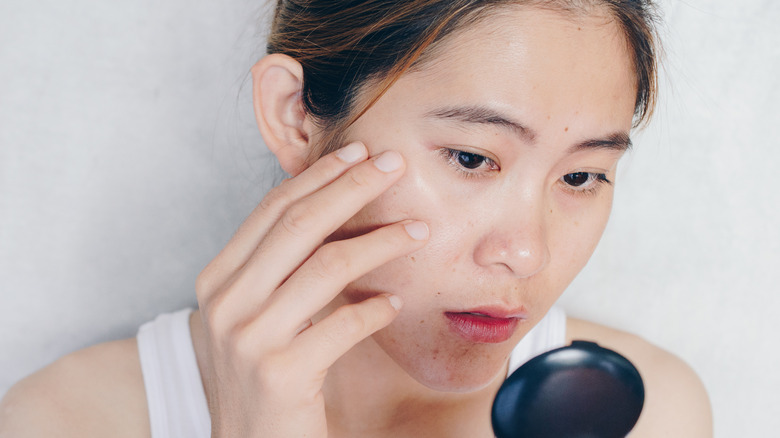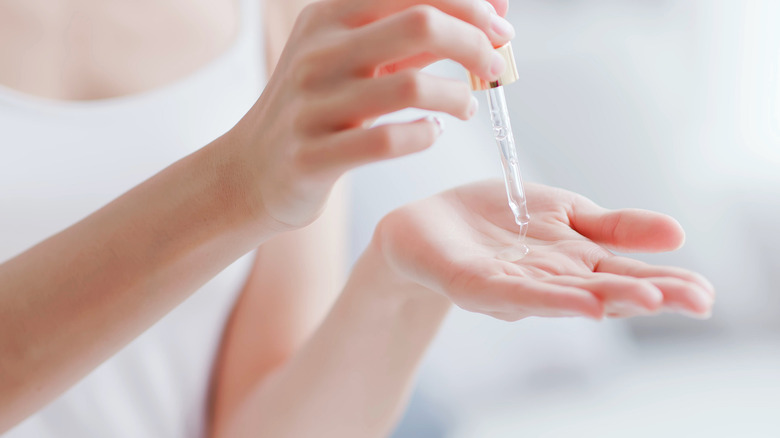Does Bio-Oil Really Work To Reduce Acne Scars?
Bio-Oil is a popular product for moisturizing skin and treating fine lines and stretch marks. But what about acne scars? Does it work equally well? Is it even safe to use on the face?
The first thing to know is that it is okay to apply Bio-Oil to the face. It is non-comedogenic, according to the company's website, so it will not block pores and cause acne. What they go on to note about acne scars is that scarring is part of the healing process caused by a build up of collagen at the site of a wound. They are permanent, so Bio-Oil can help with their appearance, but cannot remove them entirely. Research suggests that it works best on newer acne scars, which are defined as anything less than a year old, according to Healthline.
Bio-Oil works on all four of the most common types of acne scars: pockmark, ice pick, rolling, and boxcar scars.
Using oil to treat oily skin?
According to Marie Claire, in one study, 84% of people reported improvement in the appearance of their scars when using Bio-Oil twice daily for 10 weeks, and 90% reported improvement in the color of their scars.
It's also effective at treating hyperpigmentation, wrinkles, dry skin, and even oily skin. That's because when skin is oily it's often starting out as dry, and sebaceous glands are working too hard and overproducing oil to try and compensate. To treat these conditions just apply a small amount to the fingers and gently rub onto the face (via Healthline).
Bio-Oil is comprised of several types of oil including lavender, rosemary, chamomile, and calendula. It does contain linalool, a fragrance, which is known to be an allergen. It's a good idea to do a skin test first to see if you're sensitive to linalool. Just rub a small amount of Bio-Oil on your forearm and wait 30-60 minutes to see if your skin produces a reaction.

